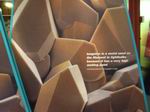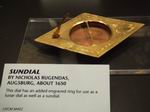 |
 |
 |
EXPERIMENTS: So Easy, Yet So Clever!
 |
 |
 |
ABOUT THIS MATERIAL |
Learning scientific concepts, scientific procedures and scientific attitudes is more relevant if it’s possible to experiment and this in turn helps to increase divergence and creative thinking. It helps to listen to others, it helps to doubt, it helps to learn from other pupils, it helps to be patient, it helps to ask oneself questions…
Moreover, thinking, talking and handling work towards discarding the idea that experimental work has rules that have to be applied in a mechanical way. This change of attitude is not possible when science is just a transmission of given knowledge.
We want and we need everybody to be able to feel fine in the school and to be able to develop their capacities to the maximum, from those pupils with special educational needs to new pupils from other countries, catering for all individuals. It’s important to remember that the diversity of views will enrich our experimental work because everybody can observe, imagine, think… and it’s not based on the retention of information.
The English language will be a real tool to help to satisfy the need that all human beings have to understand the world that surrounds us, to contribute to awakening a curiosity about why things are as they are and how they work, to improve logical thinking, to facilitate the acquisition of quantitative ideas, etc.
How to use this material
If you check the “living beings”, “matter” or “universe” sections you will find five different parts:
Some ideas to deal with this material
SCIENCE:
The conference reports you will find in the link below can help you to understand how science should be taught and learnt. This link belongs to the Documentation and Experimentation Centre of Science and Technology from the Department of Education of the Catalan government.
We cannot forget that the working speed will slow down if we compare it with a lesson taught using traditional methodology, but the results will be better. Pupils need time if we want them to think, to talk and to do in the science class.
Pupils should get used to asking themselves about the world that surrounds them and try to make hypothesises, to give imaginative answers… based on observation. For this reason there are some activities that ask the pupils to hypothesize, but you can introduce any other activity asking what would it happen if…? Just with this simple change the pupils will start to think about what they know and their ideas, thoughts, answers… will be the base from which to broaden their knowledge, to modify it, to change it, to confirm it... This question can also increase their curiosity, which will be very useful for the development of a good lesson.
Pupils are often asked to draw what they imagine something to be like before they observe it or experiment with it, simply as another way of thinking about what they know about that particular thing and to be the base from which to broaden knowledge, to modify it, to change it, to confirm it...
Some of the links to websites that you will find have animations to interact with, but if possible they should be used after the real experiment. Pupils need to do experiments because they can realize that they can think, they can come up with ideas to change an experiment as a scientist does, they can be experts… that their researches and conclusions are important.
Even though it is not explicit in the activities proposed, pupils should work in pairs or small groups as often as possible to exchange ideas, to contrast different points of view… as scientists do when they worknowadays.
It’s advisable to do the experiments before you ask your pupils to do them because, among other things, it will help you appreciate the effort in any small pupil’s contribution and let them know that their results are important for the classroom research.
LANGUAGE:
Use the language as teachers do in early school levels, emphasizing this.
Don’t forget that pupils are doing science in a language that they are still learning, just for this reason the working speed will be reduced if we compare it with a lesson done in the pupils’ mother tongue.
As teachers, we need to look for strategies to increase their understanding without translation. For example, the pupils will find a word list with all the materials… that they need at the beginning of every experiment and all the words will have a photograph next to them, if they look at the photograph they are translating. A purpose that can avoid translation is to have the material on a table and ask the pupils to name the objects, they know words such as scissors, glue, water, pencil… when they can’t name more objects the teacher can ask the pupils to guess what a thermometer, blotting paper, sugar or a drop counter is. They could guess the latter because of their similarity to their own languages, because of the context… After this process the pupils can read the activity sheet and they will recognize more words and even the image will still be important, the word will increase their power.
The pupils also have to use the language both on an oral and written level to help them to give structure to their thoughts, so there is a written scaffolding to facilitate this task on almost all the activity sheets. This help can be identified by the picture of a floating mandarin that means that those sentences can help the pupils to float instead of sinking if necessary.
An extra suggestion is to prepare a “Power Point” of the whole unit with the results of every day sessions to help the children to build their knowledge.